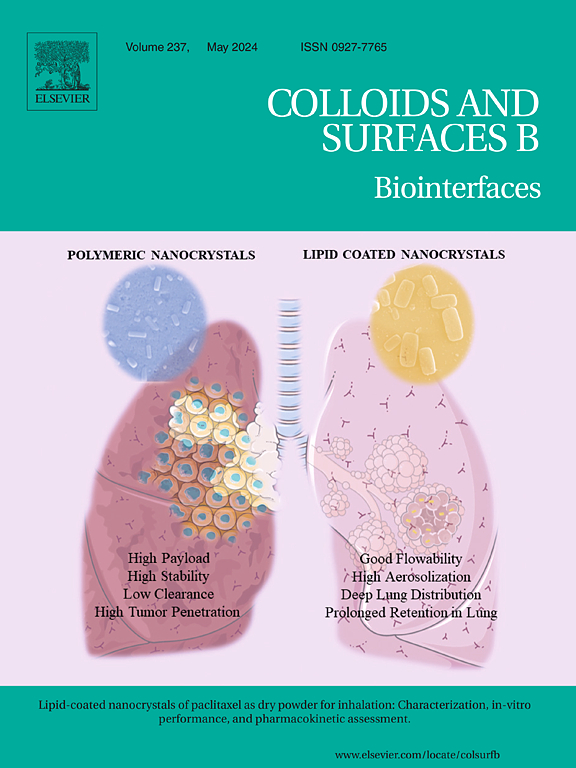Glucose oxidase-embedded mesoporous polydopamine nanoparticles produce CO for synergistic tumor starvation, chemodynamic, and photothermal therapy
IF 5.4
2区 医学
Q1 BIOPHYSICS
引用次数: 0
Abstract
Starvation therapy, developed by exploiting glucose oxidase (Gox) to convert glucose into gluconic acid and hydrogen peroxide (H₂O₂), represents a promising approach to treating tumors that heavily rely on the glycolysis pathway to meet their high energy demands. However, the efficacy of Gox monotherapy is hindered by the hypoxic tumor microenvironment and activation of energy compensation mechanisms. In this study, we present a novel multimodal therapeutic nanoplatform that synergistically integrates starvation therapy with photothermal therapy (PTT) and chemodynamic therapy (CDT) to overcome these limitations. Mesoporous polydopamine (MPDA), a biocompatible material, was combined with the CO precursor Fe₃(CO)₁₂ and Gox. Upon reaching the tumor site, the acidic environment activates the nanoplatform, initiating the conversion of glucose to gluconic acid and H₂O₂ by Gox. This process facilitates CO release and Fe²⁺ generation, leading to a cascade of Fenton reactions that produce reactive oxygen species (ROS). CO inhibits cytochrome c oxidase, disrupting mitochondrial adenosine triphosphate (ATP) production and downregulating heat shock proteins (Hsp), thereby sensitizing tumor cells to PTT-induced damage. Our results demonstrate that this comprehensive therapeutic approach significantly enhances the efficacy of cancer treatment, offering a promising strategy for improved clinical outcomes.
求助全文
约1分钟内获得全文
求助全文
来源期刊

Colloids and Surfaces B: Biointerfaces
生物-材料科学:生物材料
CiteScore
11.10
自引率
3.40%
发文量
730
审稿时长
42 days
期刊介绍:
Colloids and Surfaces B: Biointerfaces is an international journal devoted to fundamental and applied research on colloid and interfacial phenomena in relation to systems of biological origin, having particular relevance to the medical, pharmaceutical, biotechnological, food and cosmetic fields.
Submissions that: (1) deal solely with biological phenomena and do not describe the physico-chemical or colloid-chemical background and/or mechanism of the phenomena, and (2) deal solely with colloid/interfacial phenomena and do not have appropriate biological content or relevance, are outside the scope of the journal and will not be considered for publication.
The journal publishes regular research papers, reviews, short communications and invited perspective articles, called BioInterface Perspectives. The BioInterface Perspective provide researchers the opportunity to review their own work, as well as provide insight into the work of others that inspired and influenced the author. Regular articles should have a maximum total length of 6,000 words. In addition, a (combined) maximum of 8 normal-sized figures and/or tables is allowed (so for instance 3 tables and 5 figures). For multiple-panel figures each set of two panels equates to one figure. Short communications should not exceed half of the above. It is required to give on the article cover page a short statistical summary of the article listing the total number of words and tables/figures.
 求助内容:
求助内容: 应助结果提醒方式:
应助结果提醒方式:


